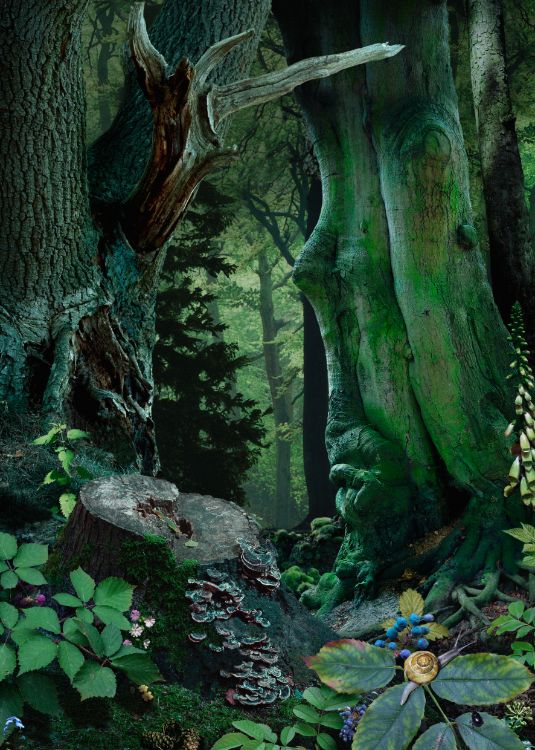The Uncanny refers to a psychological experience of something feeling strangely familiar, as if an event is repeating itself or one has been in the exact position previously. It produces an eerie feeling of repetition, and has been construed in many different guises within the psychological discipline.
The term first appeared in German psychiatrist Ernst Jentsch’s essay On the Psychology of the Uncanny in 1906. Jentsch suggested the uncanny was something new, uncertain, and unknown, often interpreted as negative. In his 1919 essay Das Unheimlich, Sigmund Freud elaborated on the uncanny, repositioning the term to suggest an experience that is familiar yet simultaneously frightening. Freud’s theory is rooted in aspects we find terrifying, repulsive, or distressing. His theory explores ideas of the doppelgänger, alienated emotions, inanimate objects coming to life, and childhood beliefs that have been repressed.

Study in Green #18, 2014
Examples of literature and film have been used in psychological discussions surrounding the uncanny, including E.T.A Hoffman’s short story The Sandman, and Stanley Kubrick’s cinematic adaptation of Stephen King’s horror novel The Shining. So too, the idea of the uncanny trickled into artistic production, particularly that of the Surrealist movement during the early 1920s. Salvador Dalí and his contemporaries looked inwards to their subconscious thoughts, dreams, and desires, producing work that was eerily uncomfortable.
While Ruud van Empel’s photographic collages surpass the Surrealist movement by almost a century, the Dutch artist consciously utilises a distinct element of the uncanny within his works. Van Empel’s process consists of carefully digitally stitching together hundreds of images from his online database to create an amalgamated final product. Van Empel has captured each image himself at an earlier date, and cuts out minuscule elements to be used within any given piece. Thus, within his photographic collages, Ruud van Empel is at once present and absent. Indeed, Van Empel was behind the camera when each element of a montage was taken, yet the final image is one of an imagined reality he has never set foot in. Looking upon Study in Green #18(2004), the artist would recognise the dappled light, verdant vegetation, and statuesque tree trunks as images he had seen and captured previously. Yet, the whole composition presents a fabricated woodland that no one has ever set foot within. In this sense, Ruud van Empel’s compositions elicit the uncanny in its purest form. They create scenes that are at once familiar yet simultaneously alien
(By Thea Gregory)
